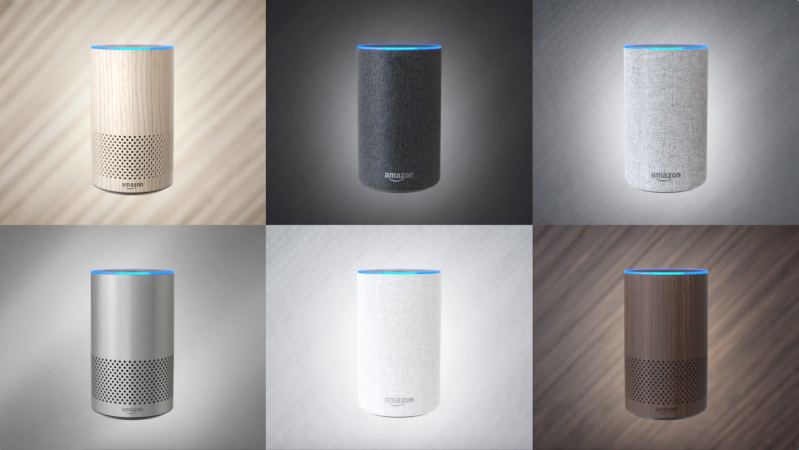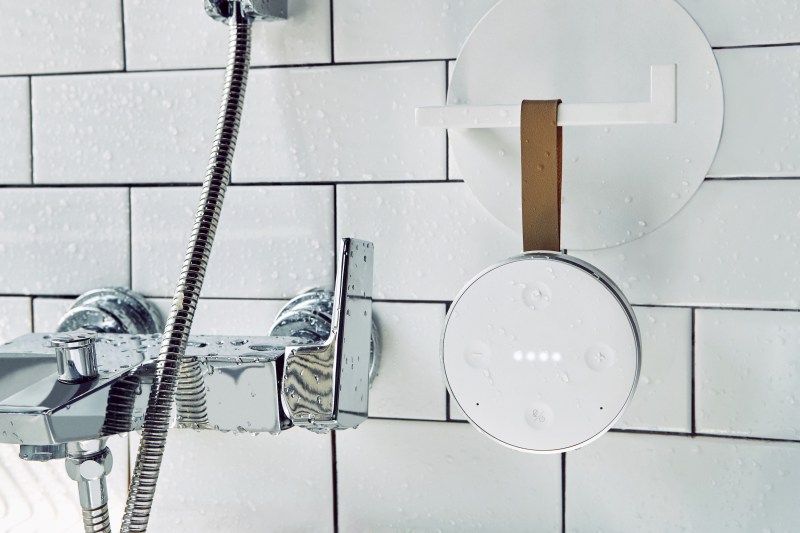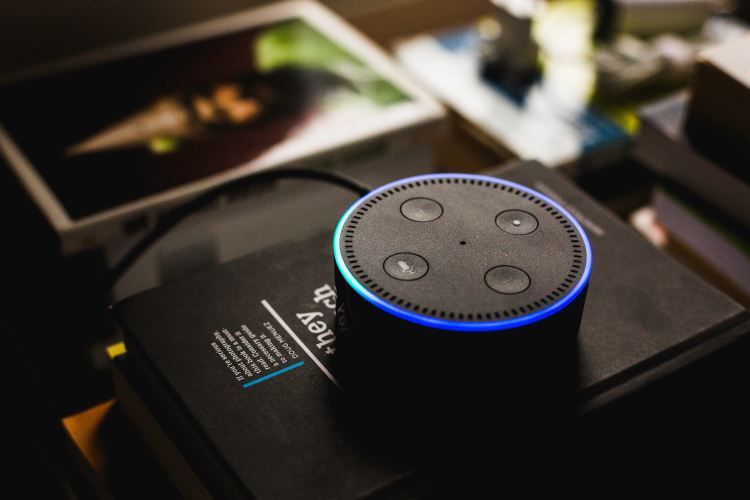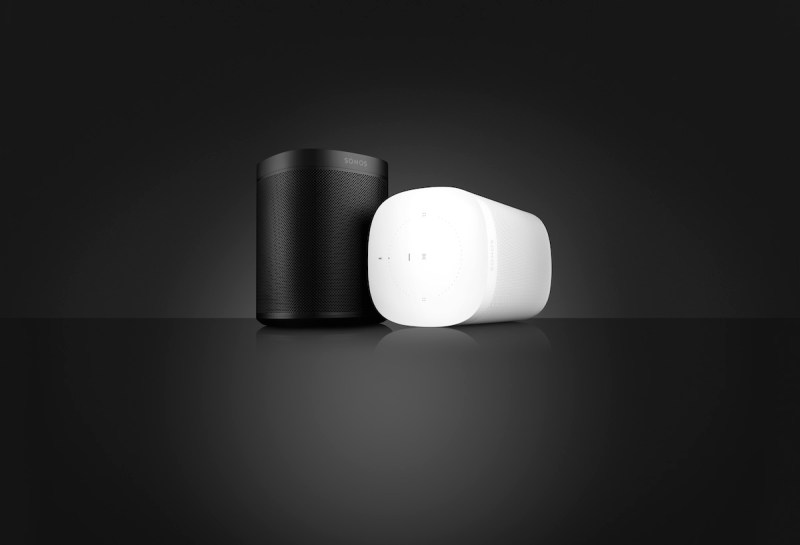Watch all the Transform 2020 sessions on-demand here.
Without a doubt, smart speakers like the Amazon Echo or Google Home will be some of the most popular gifts this holiday season. But unlike last year, when there were only a handful of choices, you now have dozens of ways to speak with AI assistants like Alexa, Google Assistant, and Cortana.
Some speakers offer superior sound quality or output powerful enough to DJ a party, some can drop bass in the bedroom, and others are even portable and waterproof enough to bring into the shower. Here’s a rundown of a few popular options this holiday season, with reviews from VentureBeat staff members Khari Johnson, Anna Hensel, and Blair Hanley Frank.
Sonos One
The Sonos One is the first voice-powered smart speaker from the company known for delivering high quality audio. Like other Sonos speakers, the One delivers rich and powerful sound. Read this review by my colleague Anna Hensel to learn more.
An exclusive added bonus, and a great one for Sonos One users, is that in 2018 you’ll be able to speak with Google Assistant and Alexa.
June 5th: The AI Audit in NYC
Join us next week in NYC to engage with top executive leaders, delving into strategies for auditing AI models to ensure fairness, optimal performance, and ethical compliance across diverse organizations. Secure your attendance for this exclusive invite-only event.
Sonos One comes in black and white and is available for $199. In October, Sonos released a software update to connect Sonos speakers with Amazon’s Echo speakers.

Above: Google lead designer for home hardware Isabelle Olsson unveils Home Mini smart speakers on stage at a hardware event held Oct. 4, 2017 at SFJAZZ Center in San Francisco, Calif.
Google Home Mini
Grouping speakers together realizes the full potential of a voice-connected home to carry out smart speaker control of devices, set reminders, and ramp up sound when you’re streaming music or a podcast.
That’s why, when deciding whether you want to buy into the family of Echo or Home smart speakers from industry leaders Amazon and Google, you have to ask whether you want to populate your house with Google Home Mini or Amazon Echo Dot speakers. If sound quality is your priority, you want the Home Mini. As this VB review explains, it’s not even a close contest.
Unfortunately, the top tap functionality for the Home Mini was disabled after a journalist discovered that a Home Mini given away at the Made by Google event in October made thousands of unrequested recordings. Some touch functionality has been added since then.
The Google Home Mini made its debut in October to compete with the Echo Tap.
The Home Mini comes in coral, chalk, and charcoal, and — like the Echo Tap — costs $49.

Above: Amazon Echo Plus
Amazon Echo Plus
The Echo Plus is nearly identical in exterior design to the first generation Echo, but it comes with a ZigBee smart home hub built in, meaning you can use it to connect smart power outlets, security cameras, and many other devices. Sound is delivered via a 2.5-inch Dolby woofer.
Like all other Echo devices, the Echo Plus is made to speak with Alexa, which means it can speak to streaming music services like Spotify and Pandora, and alarm systems from ADT and Nest.
The Echo Plus is currently on sale for $149 and is available in white, black, and silver.

Above: Google Home Max
Google Home Max
The Google Home Max is powerful enough to fill a large living room with sound — sort of like the large wood panel stereos we used to know. The original Google Home at half-volume is enough for most bedrooms, and the Home Max’s 4.5-inch woofers is 20 times stronger than the Home Max, according to Google.
The Home Max can deliver music with Google Cast, Bluetooth connection, or an Aux in connection to work with that old wood panel stereo. It can also be paired with more than 250 other devices that can cast with Chromecast to play music or bring you the voice of Google Assistant.
Like Apple’s HomePod promises to do, the Home Max delivers spatially aware sound, sensing its surrounding walls to determine how to best fill space with sound.
Google Assistant is able to connect with more than 150 smart home brands for smart control of more than 1,000 smart devices.
The Home Max, which made its debut in October, costs $399 and comes in chalk grey and charcoal black.

Amazon Echo (second generation)
The Echo delivers firm, sturdy sound with the same 2.5-inch woofer that drives the Amazon Echo Plus, though the Echo Plus has a larger tweeter for high-frequency sound.
I find is best suited to the bedroom or kitchen, where you can configure Alexa Routines to bring you news flash briefings every morning, play musical alarms, or even keep a night light on.
The second iteration of the smart speaker costs $99 (on sale for $79 at the time this story was published), which is less than the first generation Echo that spurred the voice revolution, and it comes in six colors, including light and dark wood choices.

Above: Harman Kardon Invoke with Cortana inside
Harman Kardon Invoke
The Invoke is the first speaker made for interaction with Microsoft’s AI assistant, Cortana. Sound-wise, it’s pretty amazing, better in quality than virtually any other smart speaker you can get your hands on.
Design-wise, it’s gorgeous, and sturdier than most. One downside to the Invoke may be that its far-field microphones listening for the “Hey Cortana” wake word are extremely sensitive, more so than Home or Echo speakers, and have a tendency to wake when not expressly needed. Read this VB review for more information.
Along with Cortana, this speaker offers some unique offerings, bringing you integrations for LinkedIn, Wunderlist, and Skype. Last week, Microsoft brought Gmail calendar and email integrations for Cortana to Windows 10 PCs and the Invoke, with more on the way next year.
The Invoke is the first speaker with Cortana inside but, funnily enough, Harman Kardon, owned by Samsung, may be one of the only companies around with speakers preset to speak to Cortana, Alexa, and Google Assistant. A speaker with Samsung’s AI assistant, Bixby, is reportedly due out in mid-2018.

Above: Ninety7 Loft, Vaux, and Dox
Ninety7 Vaux, Loft, and Dox
It’s fairly safe to say that Amazon Echo Dot is the best-selling smart speaker of 2017. When paired with other Echo devices, the Dot can deliver voice-powered services throughout the home or office, but the sound quality is meh. Enter the Vaux, a good-looking $49 portable amplifier built for the popular, low-cost device. The Vaux comes in carbon black and ash grey and can deliver up to six hours of battery life.
This September, Ninety7 announced two new products, the Loft and Dox, to make Alexa and Google Assistant portable. The Loft costs $49 and comes in black, white, and an attractive copper/bronze. The Dox is compatible with the second generation Echo, costs $39, and delivers up to 10 hours of battery life.

Above: Mobvoi TicHome Mini
Mobvoi TicHome Mini
If you’ve ever wanted to take the Google Assistant into the shower with you (in a non-creepy way), the TicHome Mini can make that happen. Its waterproof construction helps it stand up to the everyday ravages of getting splashed, but its battery life leaves much to be desired.
It won’t stay on for multiple days at a time, which means it’s not a replacement for a more traditional plug-in speaker. That said, it’s great at filling a gap in Google Assistant coverage around your house, or providing you with a remote node for your virtual assistant that can operate outside the home.
The TicHome Mini version of this story includes contribution from VentureBeat staff writer Blair Hanley Frank.



